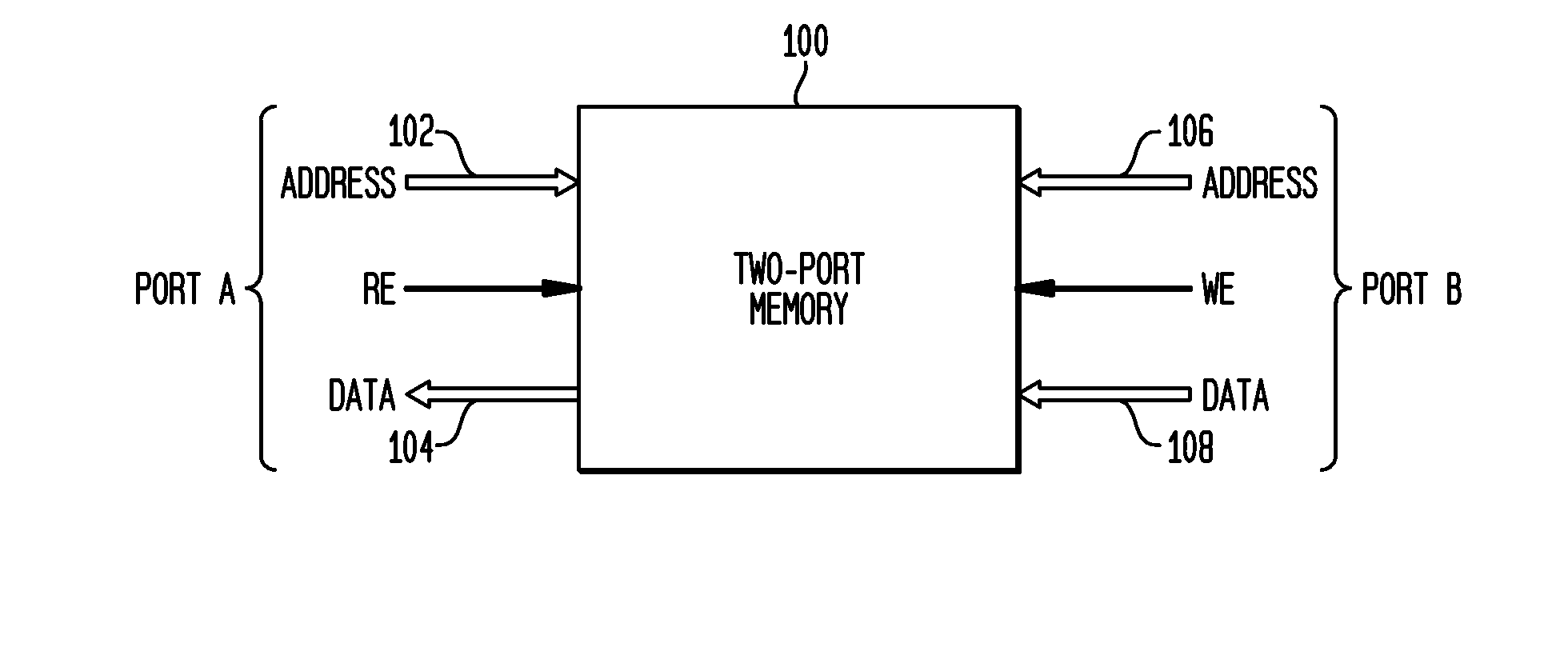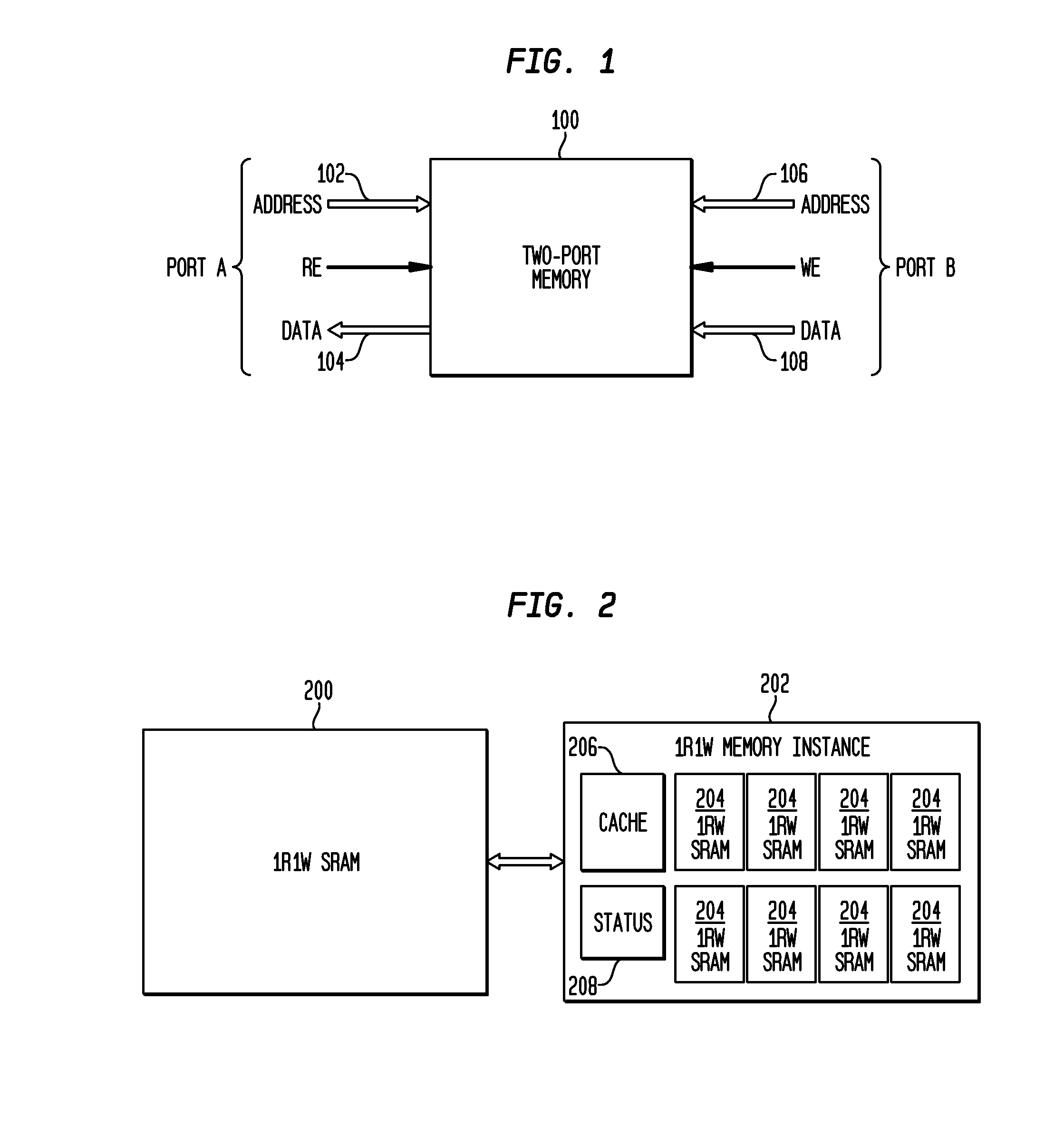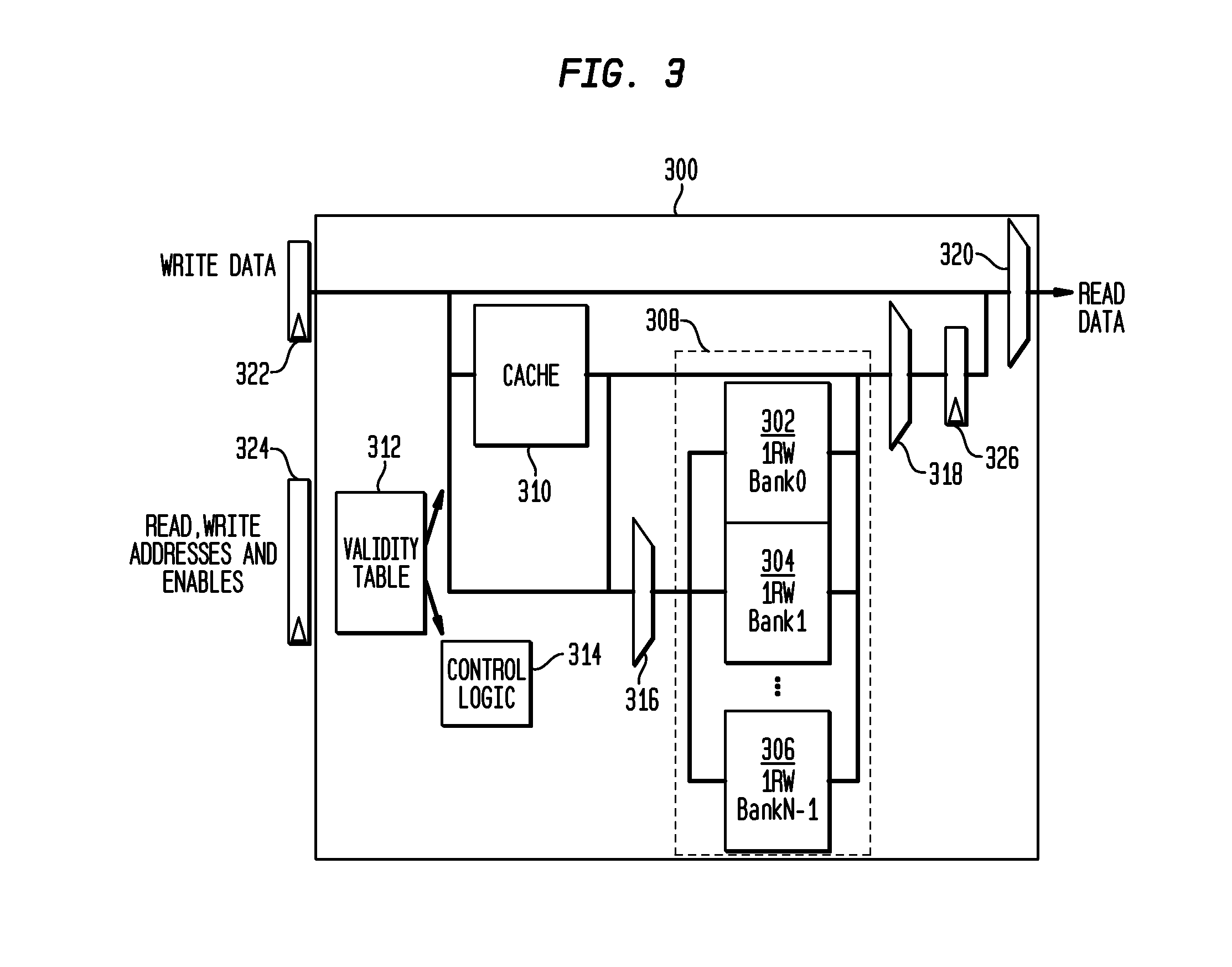Multi-Port Memory Using Single-Port Memory Cells
a memory cell and multi-port technology, applied in the field of random access memories, can solve the problems of large area and power consumption, less bandwidth, and slow memory system overall, and achieve the effects of reducing power consumption, enhancing performance, and substantially reducing power and chip area
- Summary
- Abstract
- Description
- Claims
- Application Information
AI Technical Summary
Benefits of technology
Problems solved by technology
Method used
Image
Examples
Embodiment Construction
[0026]The present invention, according to aspects thereof, will be described herein in the context of illustrative multi-port memory circuits implemented using primarily a plurality of single-port memory cells. It should be understood, however, that the present invention is not limited to these or any other particular circuit configurations. Rather, the invention is more generally applicable to techniques for implementing a multi-port memory using a plurality of single-port memory cells in such a way that conflicts between read and write accesses are easily resolved without increasing latency. A multi-port memory implemented using a plurality of single-port memory cells in accordance with aspects of the invention advantageously provides enhanced performance, reduced power consumption and reduced chip area, among other benefits, compared to a true (monolithic) multi-port memory cell implementation.
[0027]Techniques of the invention essentially eliminate the latency penalty otherwise i...
PUM
 Login to View More
Login to View More Abstract
Description
Claims
Application Information
 Login to View More
Login to View More - R&D
- Intellectual Property
- Life Sciences
- Materials
- Tech Scout
- Unparalleled Data Quality
- Higher Quality Content
- 60% Fewer Hallucinations
Browse by: Latest US Patents, China's latest patents, Technical Efficacy Thesaurus, Application Domain, Technology Topic, Popular Technical Reports.
© 2025 PatSnap. All rights reserved.Legal|Privacy policy|Modern Slavery Act Transparency Statement|Sitemap|About US| Contact US: help@patsnap.com



